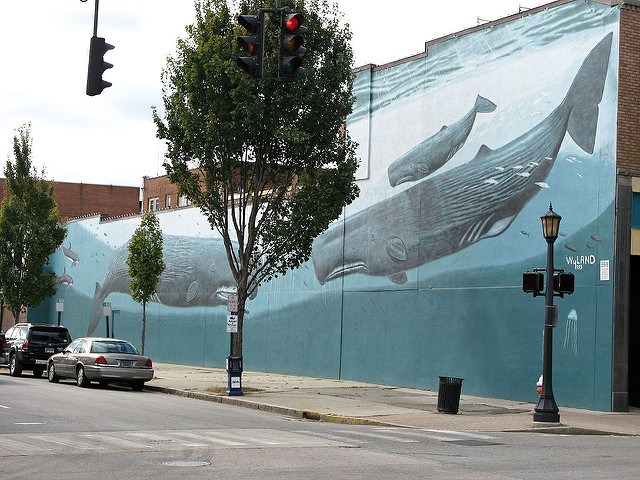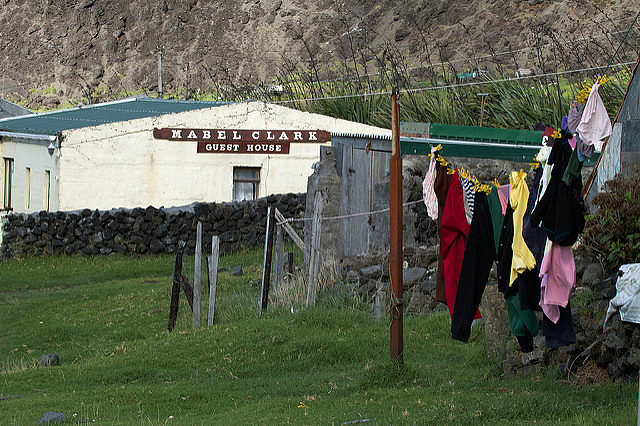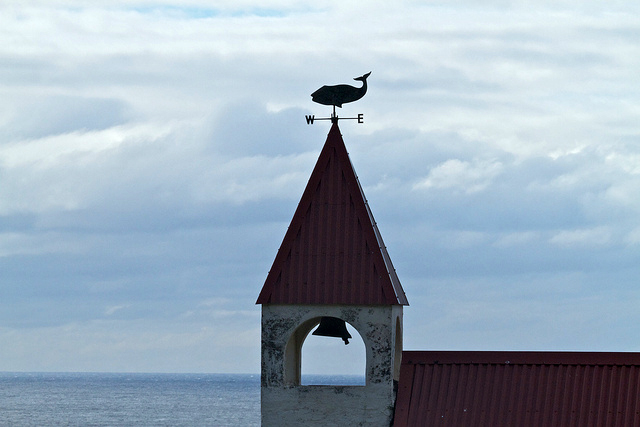James Glass recently traveled from his home on Tristan da Cunha to visit relatives in New London, Connecticut. A descendant of Corporal William Glass, the founder and first leader of the British colony on Tristan, James Glass was the subject of an article in The Day, the New London newspaper. The paper described his famous ancestor, his island home, and other members of the Glass family whom he met for the first time, but it did not mention how whaling tied the communities together.

Members of the Glass family would all be familiar with the history. Corporal Glass and his family decided to stay behind on the island and found a colony along with two civilians when a military garrison that he’d been part of was withdrawn in 1817. Over the years, the Glass family had eight sons and eight daughters. By the time Corporal Glass passed away in 1853, many of his children had become whalers, or had married whalers, and had settled in New London, one of the major whaling ports on the coast of New England. Not long after the patriarch died, his widow, Maria, and most of the remaining family left Tristan on some whaling ships to settle with their family in New London, though some of them later returned to Tristan.
James Glass visited the Cedar Grove Cemetery in New London to see the graves of ancestors who had migrated to Connecticut in the mid-1800s. On Tristan, he is the Head of the Fisheries Department, which oversees the lobster fishing industry. He planned to fly on to Santa Barbara, California, to study a lobster fishing operation in a Marine Protected Area. Tristan is planning to create a marine protected area of its own in a few years. He was accompanied on his trip by his wife and their 10-year old grandson.

He described his island for The Day reporter, Kimberly Drelich, as a highly peaceful place. He told her there is no crime and only one police officer on the island, an assertion that was reported in an earlier news story. The islanders enjoy swimming in the ocean but they don’t play serious sports, he said. The island has a hospital with two doctors and five nurses, plus one school for 34 children. The community will pay the costs of schooling beyond that level for children who want more education.
Mr. Glass said that everyone on the island is employed. “We don’t have any social services,” he told the reporter. “We try to find work for everyone.” He explained that people on Tristan typically do many different things. In addition to directing the fisheries operations, he serves as a conservation officer, as a member of the Island Council, and as the Eucharistic Minister for the Catholic Church in the Settlement.

One of the more interesting aspects of the historical connection between New London and Tristan is the fact that the original “constitution” of the settlement on the island was rediscovered in New London. Peter A. Munch pieced the story together for his landmark book Crisis in Utopia (1971).
He wrote that Corporal Glass and his two civilian partners prepared a constitution of sorts, a written agreement between them, which they signed in the presence of the commanding officer of the departing garrison, Lt. R.S. Aitchison, on November 7, 1817. The three agreed to the formation of a communal society, with purchases to be paid for equally and ownership of everything to be divided evenly.
While those communistic articles in the document soon proved to be unworkable and were abandoned, some of the other ideals that they put into writing persisted. For instance, article 4 in their compact stated: “That in order to ensure the harmony of the Firm, No member shall assume any superiority whatever, but all to be considered as equal in every respect, each performing his proportion of labour, if not prevented by sickness (Munch 1971, p.29).”
Munch pointed out that this document was put in a drawer and soon forgotten, but the spirit of equality, anarchy, and independence that it captured from the founders lasted, despite some changes in practices forced on the settlement by circumstances. After William’s death, when the remaining members of his family decided to move to New London, the document apparently went along too. There, in 1932, it was rediscovered in the possession of an aging granddaughter of William’s and deposited in the British Museum.
Summarizing the historical connection between New London and Tristan, Munch wrote that the document encapsulated the “spirit of freedom, equality, and idealistic anarchy” (p.31) of Tristan da Cunha, which has remained a driving force among the islanders to this day.